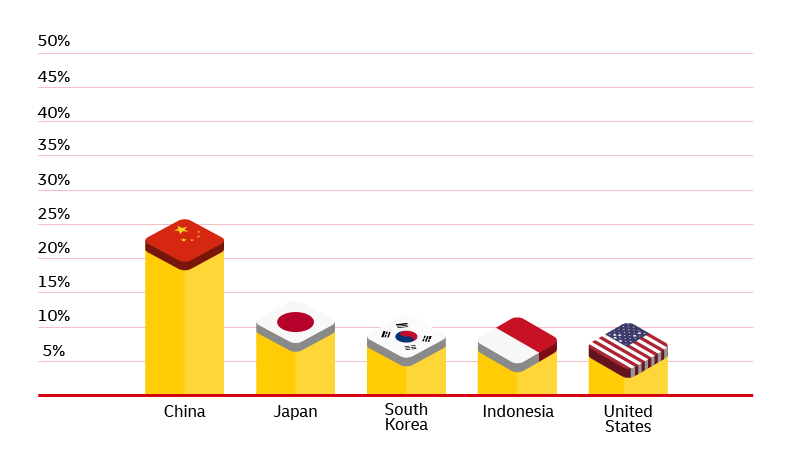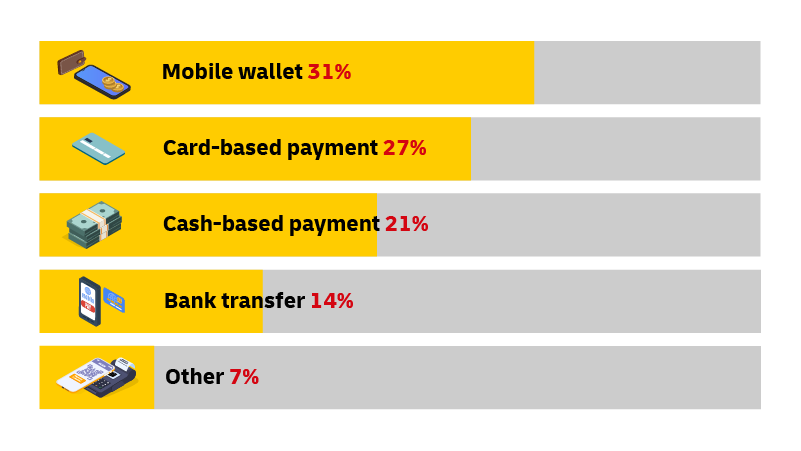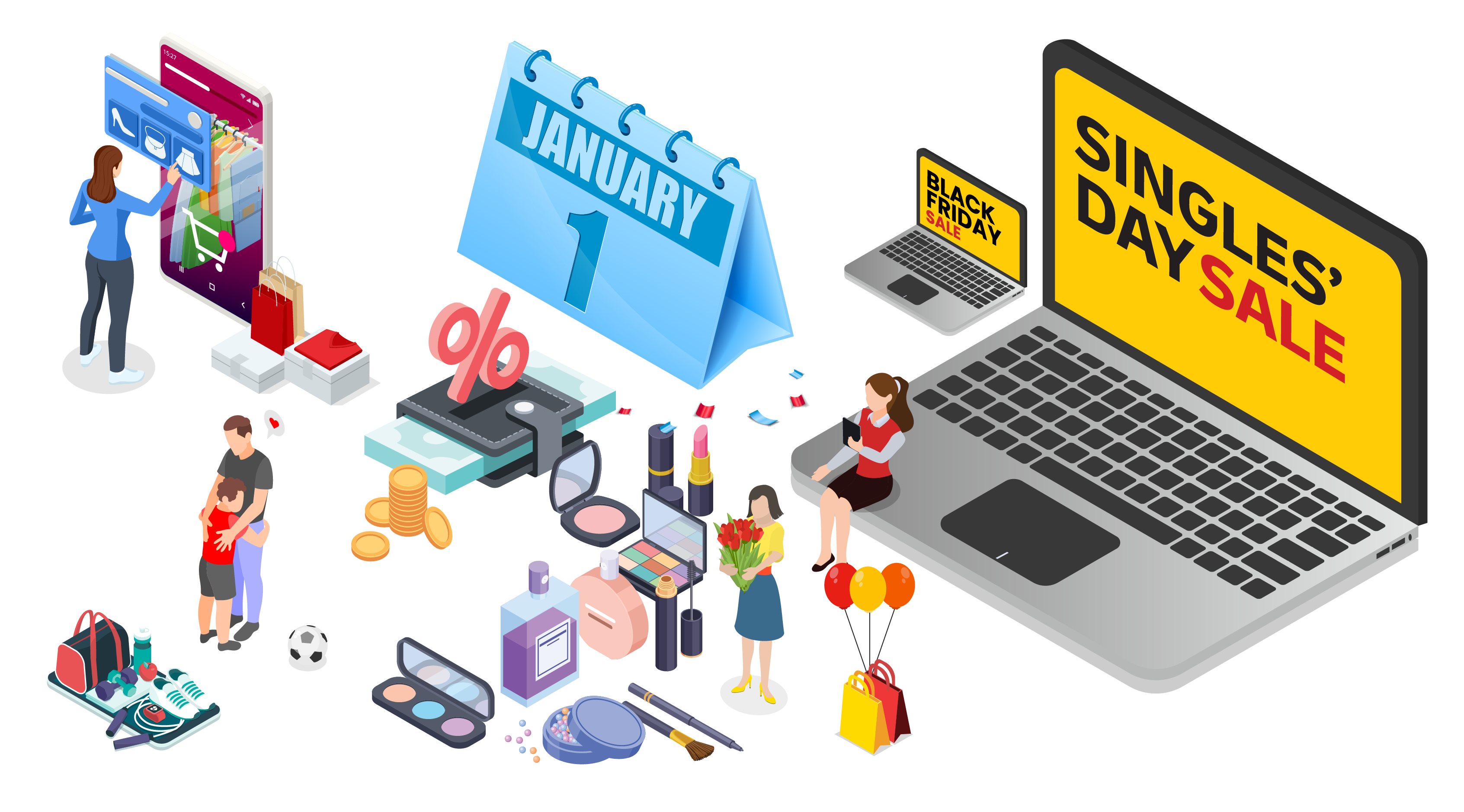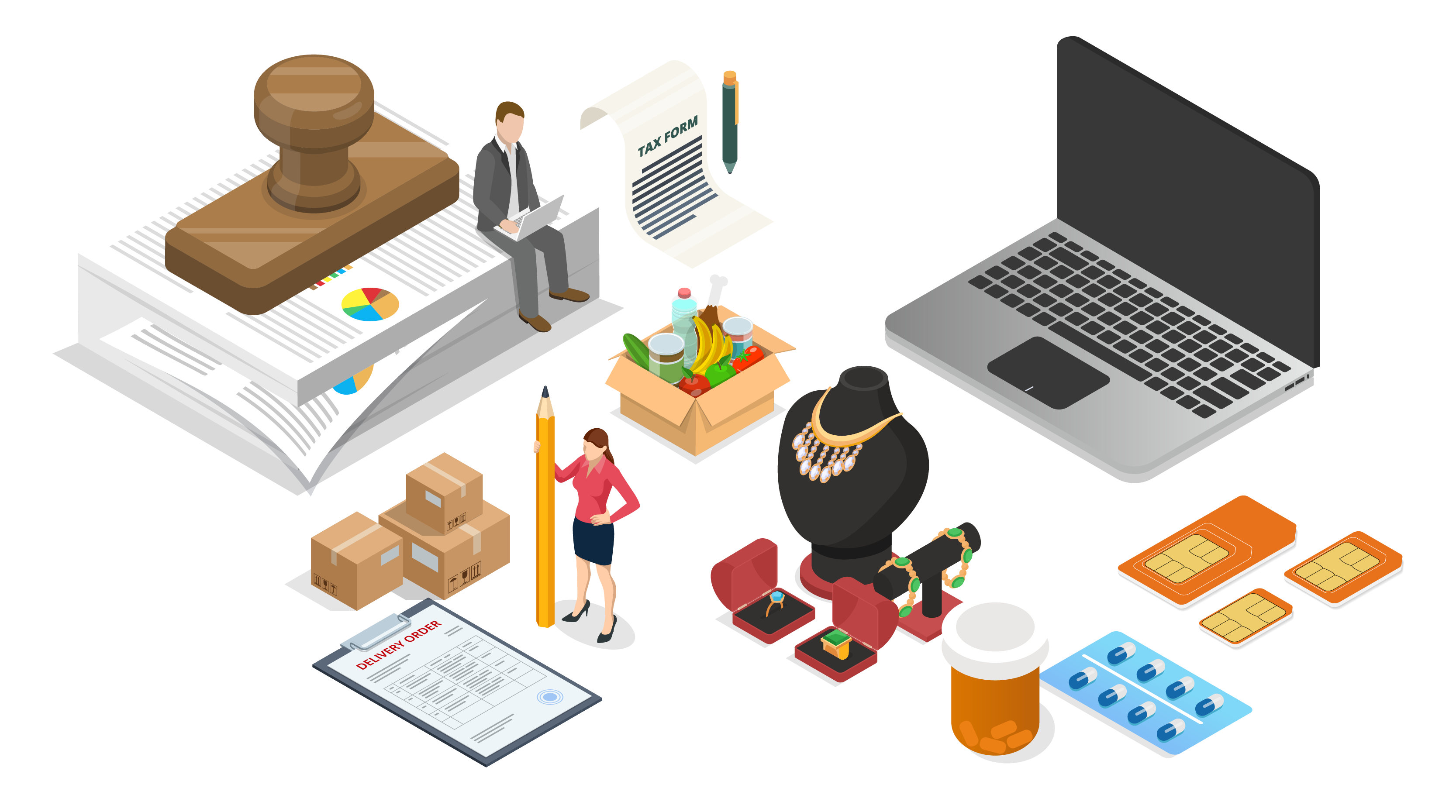Grow your business with the Discover newsletter
Logistics advice & insights straight to your inbox
Subscribe now
The poverty rate declined from 23.5% in 2015 to 18.1% in 2021(2). This improves the lives of many Filipinos, and is also an indicator of the country’s positive economic direction of travel.
The GDP of the Philippines has grown consistently at around 6% for the last several years(3) (with the exception of 2020, when the pandemic disrupted the economy) – a figure which is expected to remain constant through 2028.
Strong and sustained e-commerce market expansion through to 2027 – a sign that the Philippines is a good candidate for any overseas exporter looking for new markets to target.
The e-commerce penetration rate sits at 43.9%, and is forecast to grow to 48.6% by 2028(5).
In 2022, the average revenue per e-commerce user in the Philippines was US$379.1(6). This compared to a global average of US$1,320(7).
Shopee and Lazada are the dominant e-commerce marketplace players in the Philippines. Between them, they take the majority of market share, but other global marketplaces are also popular in the Philippines.
Shopee is a household name in the Philippines, scoring over 70 million visits every month.
Like Shopee, Lazada is well-known, receiving around 35 million visits every month.
Asian fashion marketplace Zalora is one of the most popular online destinations for a range of branded fashion items.
The globally recognised marketplace for used and new purchases.
Carousell, formerly OLX, sells second-hand items, from mobile phones to cars and even houses.
Amazon is not a major player in the Philippines and does not have a local market website, but it does ship to many addresses in the country.
* % of consumers who had purchased from that category in the previous three months
Around a fifth of all of the Philippines’ imports come from China. In 2021, the country’s leading import partners were:



The Philippines has several shopping events and holidays throughout the year. You can read in more detail here:
New Year's Day (1st Jan)
New Year's Day is a great time for businesses to offer shopping sales and discounts on their products and services. New Year's Day is also a national holiday in the Philippines, which means that Filipinos will likely have more time to browse and shop online.
Mother’s Day (2nd Sunday of May) & Father’s Day (3rd Sunday of June)
Top products to sell online include products and services that would be popular with mothers, like flowers, jewellery, and spa packages. Meanwhile, gifts that are popular for Father's Day include items like electronics and sports equipment.
Singles’ Day (11 Nov)
In the Philippines, 11.11, also known as Singles’ Day, is considered one of the best online sales days for businesses. Extremely popular within the Asian region, this is a great opportunity for businesses to sell products that are typically sold in pairs, such as shoes, earrings, and earpieces.
Black Friday, Cyber Monday (Monday after Black Friday) & Boxing Day (26th Dec)
Savvy Filipino shoppers know that some of the best deals online can be found on these two back-to-back shopping holidays. Black Friday takes place on the Friday immediately after Thanksgiving, while Cyber Monday falls on the Monday after Black Friday.
Import tax in the Philippines is straightforward, but you still need to know what you’re doing in order to avoid paying penalties.
Depending on the types of goods being imported, additional documents may be required, including the following:
The de minimis threshold is shipment values of below 10,000 PHP
So no tax to be paid on shipments smaller than this. But shippers should still indicate the correct and complete value of the shipment to avoid problems.
Don’t split shipments to avoid taxes
Splitting shipments to avoid the de minimis threshold could cause delays or penalties.

For more information on exporting to the Philippines, read the DHL guide.

Here are three tips on successful importing into the Philippines:
With DHL DTP (Duty and Taxes Paid), the seller pays the import duties, taxes, and other fees associated with shipping the product, allowing the Filipino consumer to receive the product without any additional costs or fees.
DHL DTP is a valuable service for cross-border sellers looking to reach Filipino consumers. By offering a seamless and hassle-free shopping experience, sellers can increase customer satisfaction and loyalty, and build a strong brand presence in the Philippine market.
Our complete international shipping service helps you ship quickly and reliably.
Find out more